- Reclamation
- News & Multimedia
- News Stories
- Eastern Colorado Area Office Creates Partnership for Proactive Fire Management
Eastern Colorado Area Office Creates Partnership for Proactive Fire Management
Written by: Kara Lamb

July 2013: DOI Secretary Sally Jewell and USDA Secretary Tom Vilsack sign the Western Watershed Enhancement Partnership at Horsetooth Reservoir.It was spring 2012 and the foothills and canyons in Colorado were already on fire. Patrick McCusker, Natural Resource Specialist with the Eastern Colorado Area Office, remembers it clearly.
"That year was especially rough," he said. "We started with the Hewlett Gulch Fire in April, and then the High Park Fire in June."
Eastern Colorado Area Manager, Jaci Gould, agreed: "The High Park Fire kicked off a lot of conversation with our partners," she said. "It was clear something was going to have to change. With continuing drought and high temperatures, we all felt a more proactive approach to protecting resources was necessary.
For Reclamation and our partners that meant protecting water projects. ECAO began working with its partners on the Colorado-Big Thompson Project. C-BT spans north-central to northeastern Colorado, bringing water from the mountains to the plains.
Reclamation owns and operates the water project, diverting and storing water supplies, and generating hydroelectric power. The Northern Colorado Water Conservancy District serves as Reclamation's operating partner, delivering water to users in northeastern Colorado.
The USDA Forest Service manages the Arapaho National Recreation Area and manages National Forest System lands surrounding C-BT collection, conveyance and storage facilities in Grand County and on the Front Range.
Colorado State Forest Service is the lead state agency for providing forest stewardship, fuels reduction and wildfire mitigation assistance to private landowners.
"We asked one another what each agency was doing in light of the increasing threat of fire," Gould said. "No single agency had enough resources to solve the problem of proactive protection and reactive treatment. But partnership makes it possible for everyone to do a part."
So, a new partnership began. Working closely with Northern Water, the Colorado State Forest Service and the Arapaho-Roosevelt National Forest, ECAO put together a plan for sharing resources and problem solving in a cooperative fashion.
The partnership team was named after the C-BT project and the headwaters which feed the overall system.
"And the Colorado-Big Thompson Headwaters Partnership was born," said McCusker. Using Memorandum of Understanding templates from the Forest Service, the Headwaters Partnership drafted an overarching document, describing the goals and needs of the emerging collaboration.
Using the example of Reclamation's interagency agreements, the group then drafted basic action plans describing each agency's role. Work addressing the pinebeetle epidemic around the C-BT's collection system in Grand County began even before the MOU for the Headwaters Partnership was signed in December 2012.
It could not have been more timely. By March 2013, the foothills along the eastern portion of the C-BT were on fire. In one area, the Galena fire burned to the shoreline of Horsetooth Reservoir.
News outlets warned of longer fire seasons starting before mountain snow melted in the spring and lingering through summer well into late fall.
In June of the same year, even President Obama addressed the issue as he began rolling out his Climate Action Plan.
"Firefighters are braving longer wildfire seasons and states and federal governments have to figure out how to budget for that," President Obama told students of Climate Change at Georgetown University. "I had to sit in on a meeting with the Department of the Interior and Agriculture and some of the rest of my team just to figure out how we're going to pay for more and more expensive fire seasons," the President said.
The Departments of the Interior and Agriculture came to similar conclusions as the water project partners in northern Colorado.
In July, the Secretary of the Interior, Sally Jewell, and Secretary of Agriculture Tom Vilsack, traveled to Horsetooth Reservoir to sign the new Western Watershed Enhancement Partnership, a new feature under the President's Climate Action Plan. Working together with local water users, the Western Watershed Enhancement Project identifies and mitigates risks of wildfire to watersheds and facilitates activities such as wildfire risk reduction through forest thinning, prescribed fire and other forest health treatments, minimizing post-wildfire erosion and sedimentation, and restoring areas recovering from past wildfires.
At the signing ceremony, the Colorado-Big Thompson Headwaters Partnership was heralded as the prototype for the WWEP and as its first pilot program.
On the first anniversary of the WWEP's signing, Deputy Secretary of the Interior, Mike Connor, visited Horsetooth to see some of the recent accomplishments under the C-BT Headwaters Partnership.
"The progress made here on the ground to reduce the presence of hazardous fuels and proactively protect the water supply sets a strong example for the West when it comes to establishing effective partnerships and protecting watersheds in the face of increasingly destructive wildfire seasons," Mr. Connor told the media, as they overlooked portions of the High Park and Galena fire scars above the reservoir.
Seeing no reason to limit the program, staff at ECAO expanded the C-BT Headwaters Partnership to include Green Mountain Reservoir, the western edge of the C-BT, and the entire Fryingpan- Arkansas Project.
In August and October 2014, a new MOU was signed with Region 2 of the Forest Service, the Colorado State Forest Service, and Reclamation's partner on the Fry-Ark, the Southeastern Colorado Water Conservancy District. Work has already begun on beetle-kill pine around Turquoise Reservoir, Fire Management Plans, and related environmental compliance efforts.
"We're starting to see some results from all our work," said Mc- Cusker. "We've reduced impacts to Horsetooth Reservoir and have proactively cleared a lot of wild fire susceptible material along the C-BT's collection system."
"We set an example and we're getting results," said Gould. "We leveraged a lot of resources to build a better program and it's working" she said. The partnership has achieved results.
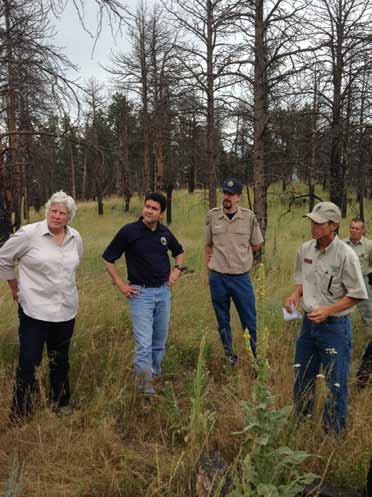
In July 2014, a year after the WWEP signing, ECAO Area Manager Jaci Gould and then-Commissioner Mike Connor join the Colorado State Forest Service and U.S.D.A. Forest Service on a tour of the fire treatment area around Horsetooth Reservoir. Photo by Peter Soeth, Reclamation Public Affairs.
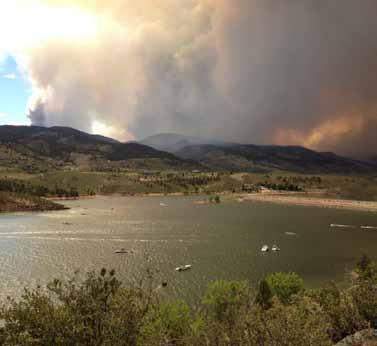
The 2012 High Park Fire was the impetus for the Colorado-Big Thompson Headwaters Partnership.

Debris booms in Soldier Creek: After the High Park Fire, debris booms were placed along Soldier Creek, which drains into the north end of Horsetooth Reservoir, to catch ash and other fire sediment that might wash into the waterway during storms and snow melt.

In 2013, sediment dams were placed in Soldier Canyon, upstream of Horsetooth Reservoir.
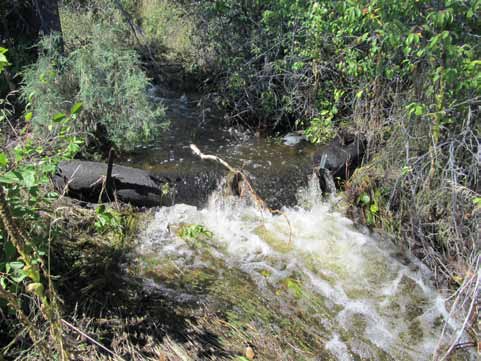
Waddles in action after a rain storm.
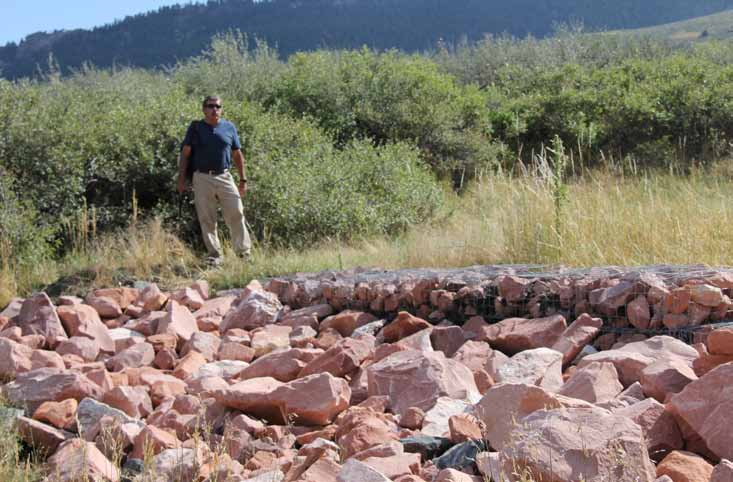
Patrick McCusker, Natural Resource Specialist from ECAO, checks the sediment dam in Soldier Canyon a week before Deputy Secretary Mike Connor's visit.
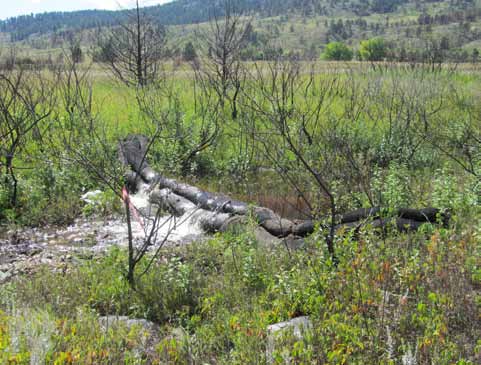
Waddles slowing spring runoff in 2013.
Published on April 01, 2015

